The Overgrown Graveyard in the Woods
Early morning scrambles amongst lichen-stained stones - 27/01/24
My first weekend home after our residency, I wake up accidentally early and hear birds. I am normally slow on weekend mornings, but today I get dressed and go out into the still air. It smells of winter, fresh and cold, and I go down through the woods. Right away I find a patch of snowdrops, my first of the year, pushing up through the leaf litter. Around the one patch of white are the unblossomed stalks of others still to come and, less romantically, a big old bit of dog poo.
I go down the hill, pausing at the bottom to listen to the endless calling of the birds far above, then cross the stile into a field. Most of it is in the shade and frost lies white on the ground, coating every blade with silver, etching every leaf edge. I walk toward the sun, where it peaks rosy on the horizon. As I cross the shadow line, the grass becomes green and wet, ice turned to water in the early light. At the other side of the field the woods start again and I weave through them, past the fairy tree, past a fallen trunk so low to the ground I have to crawl beneath. Its trunk is so wound with ivy stems that it looks like a twisting, breathing sculpture. I come out onto a concrete path, follow it down toward the village. And then I detour, off the path, to the graveyard I’ve never been to but always meant to visit.
I don’t take the main paved path through it. Instead I turn, along the back row, where the graves are green and the letters half hidden. I make one out; ‘sweetly he sleeps, the pilgrim now leaving this weary road.’ Above this verse the chipped out letters tell of how respected this man was, what a strong part of the community, how well loved he was. And then he has his poem. Below that, ‘Also Mary, Wife of the above.’ Beside it, lying flat on the ground, a small stone, un-engraved, perhaps one for a child. I see many similar inscriptions as I walk on, women at the end of the stone, the wife of. Another for a woman alone, described simply as a ‘loving wife and mother.’ It is of a different time, I know, but what if you are neither?
At the far end the graveyard wall has fallen away and the graves leach out onto open moorland, behind them only a tangle of frosted bracken. Deeper into the cemetery the lines between graves have been swallowed by woodland; ivy snakes over stones, the soil between them mulchy, leaf littered. Holly bushes, spikey and red berried, cluster across what once must have been paths. Picking my way through, I find a wreath of poppies, a postcard to a grandad wrapped in a sandwich bag, a green grave for a woman in her thirties who died in 1956 but whose stone is cracked and moss riddled and looks much, much older.
I see wings, then, stone spread out in graceful curves, and I fight my way round to find the face. It is a tall angel, kneeling, secreted away amongst the greenery. Around me, half hidden in fallen leaves, are more snowdrops. When I find my way back to the path, crouching under branches, shielding my eyes from waxy spikes of holly, I find graves arranged in neat grass and I miss the wildness of the woodland ones. I know where I would rather rest. I find a sign that makes sense to me, that makes the wilderness seem a sign of spirit not neglect; this, the sign says, is a living churchyard.


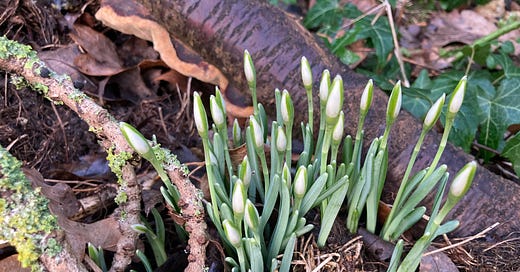



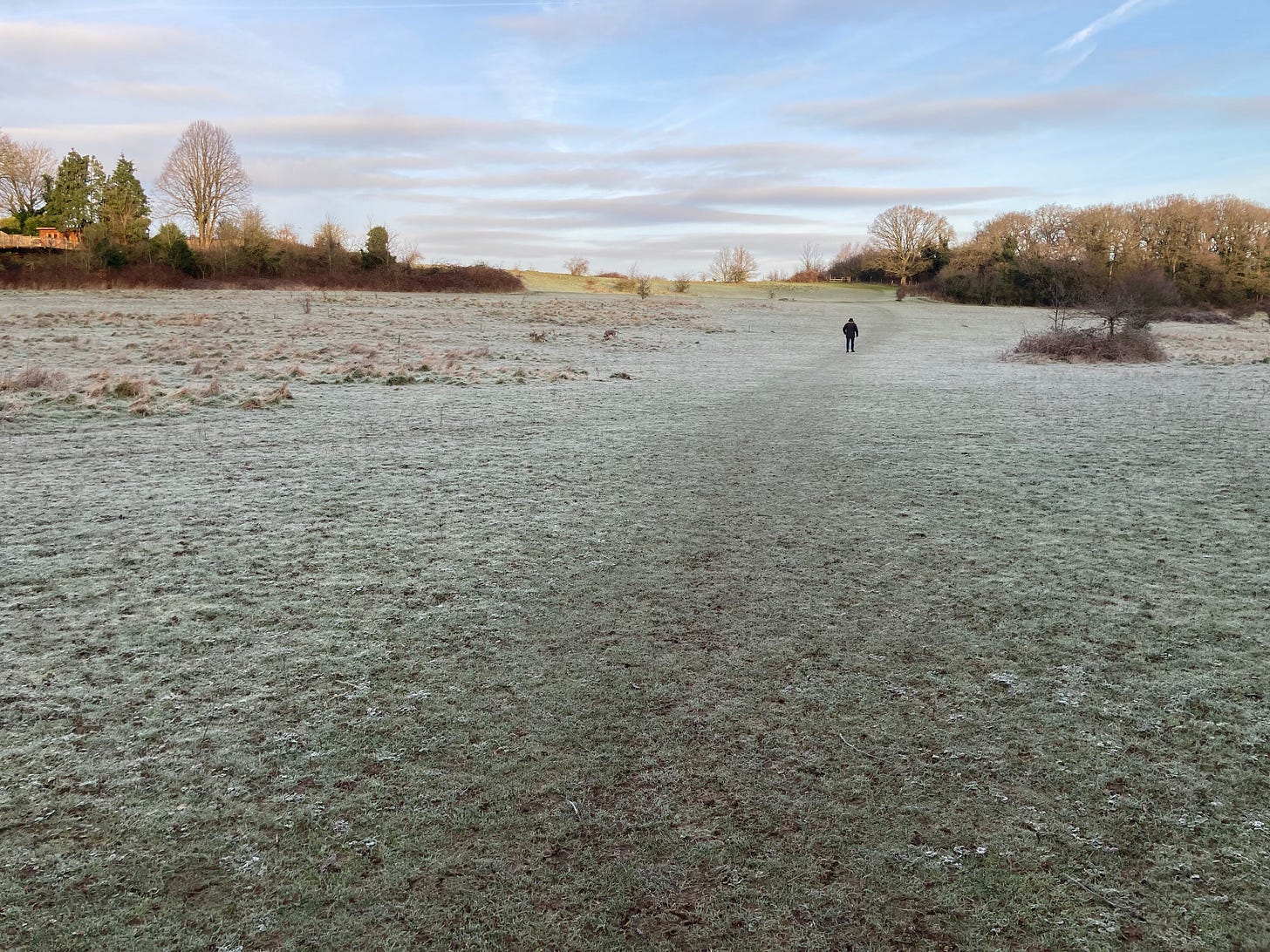
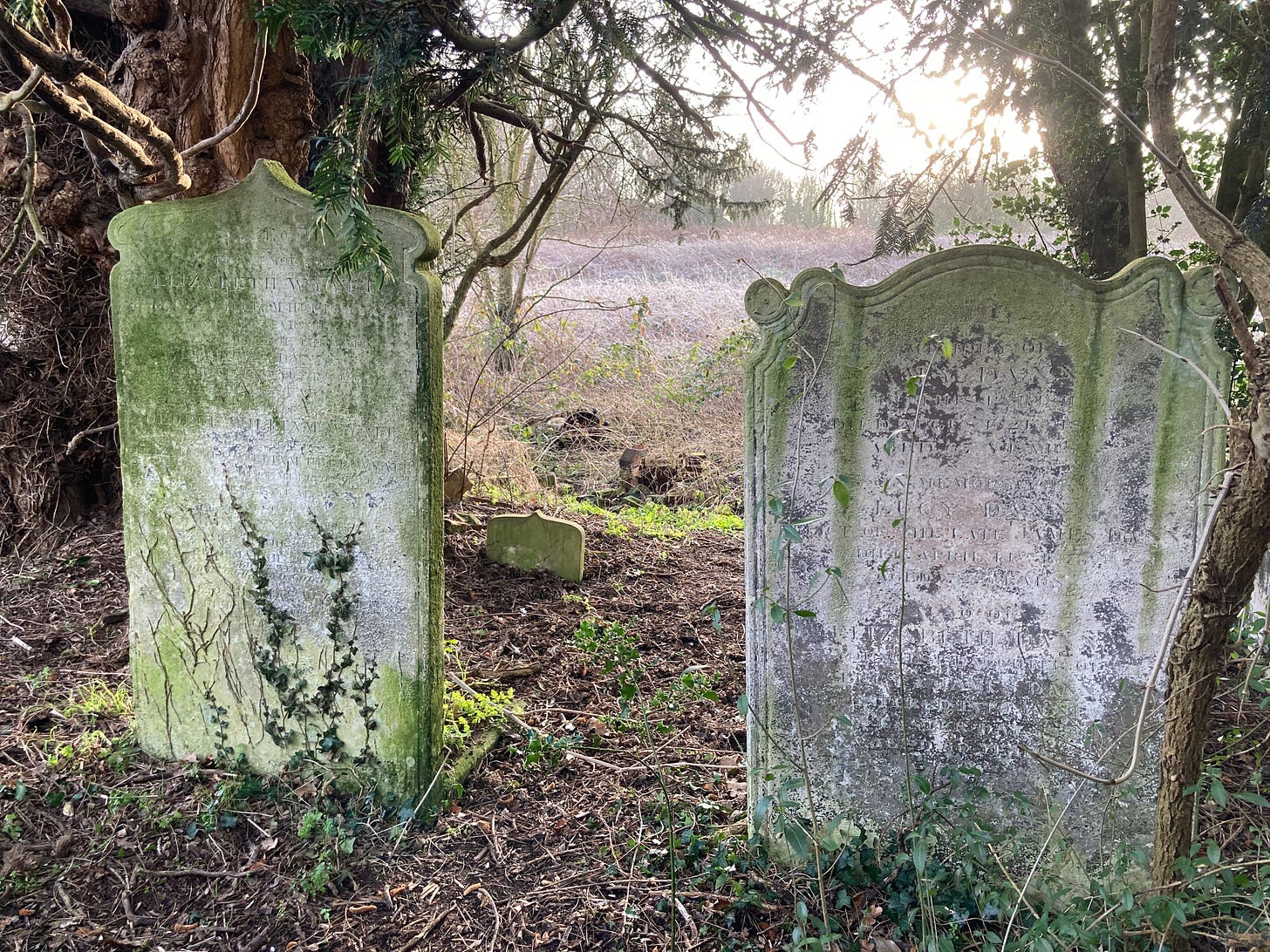
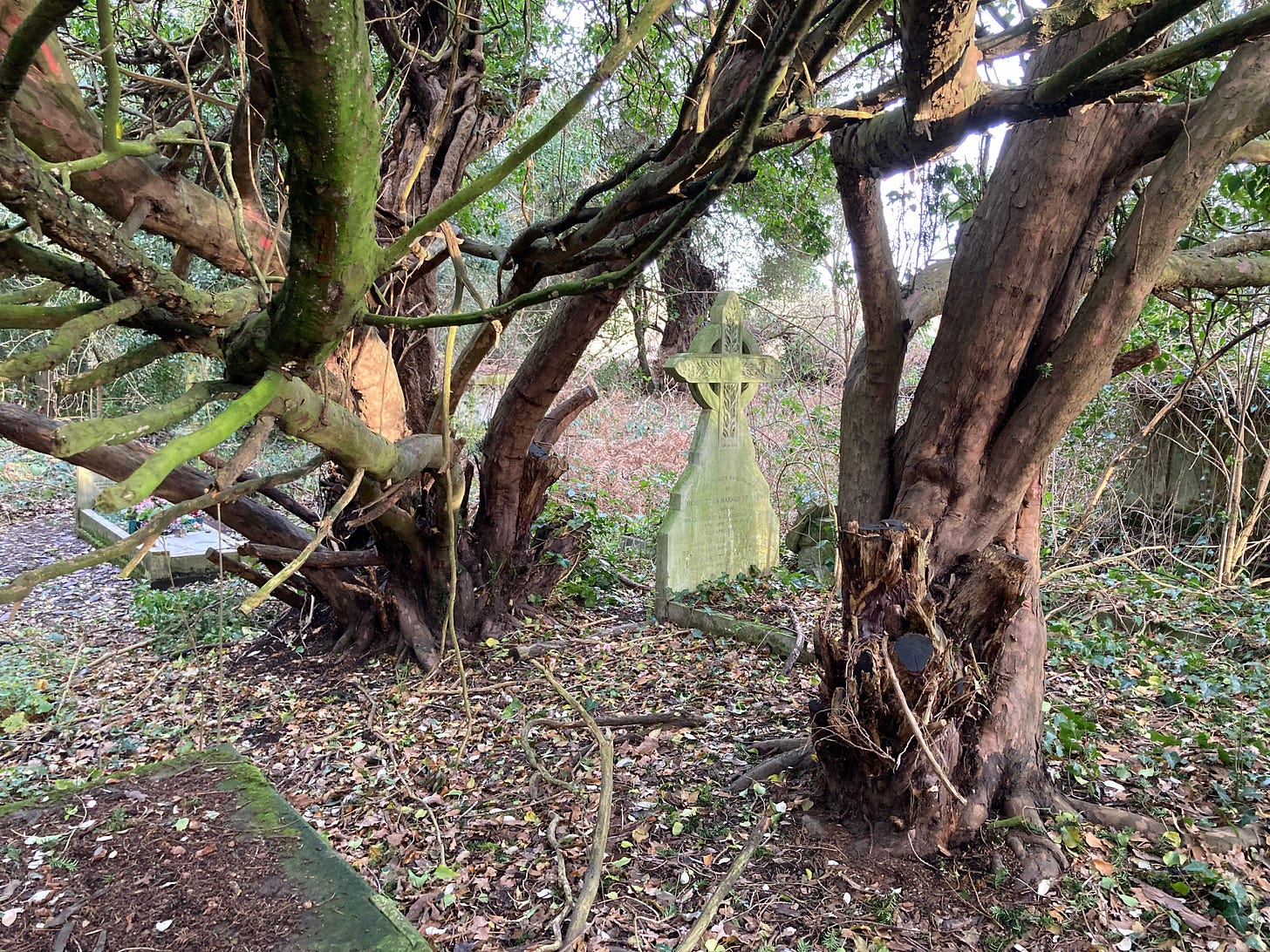
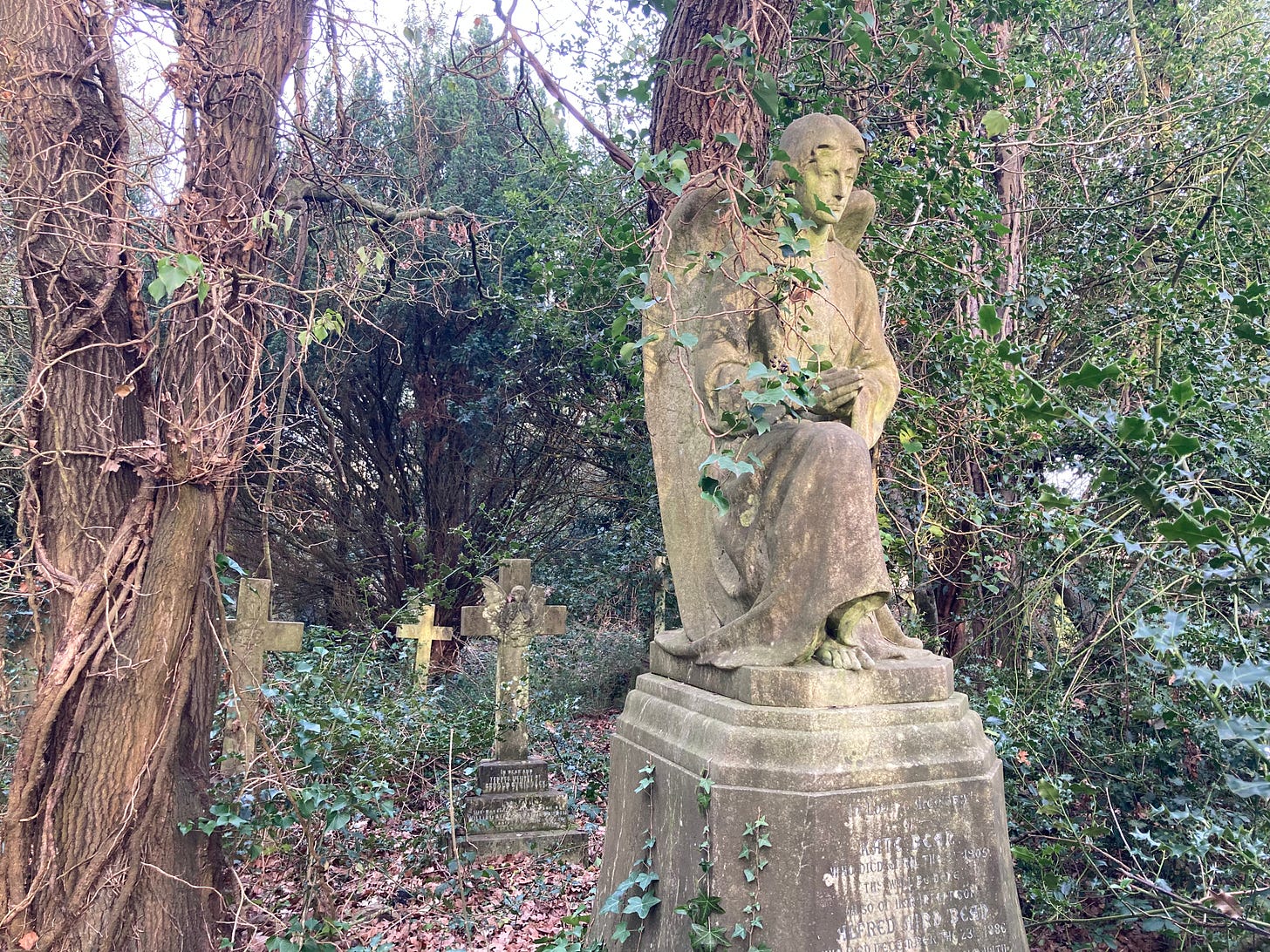
Thank you for the walk. Letting the wildness in. I love when we can see death and life as part of the same cycle rather than a duality.